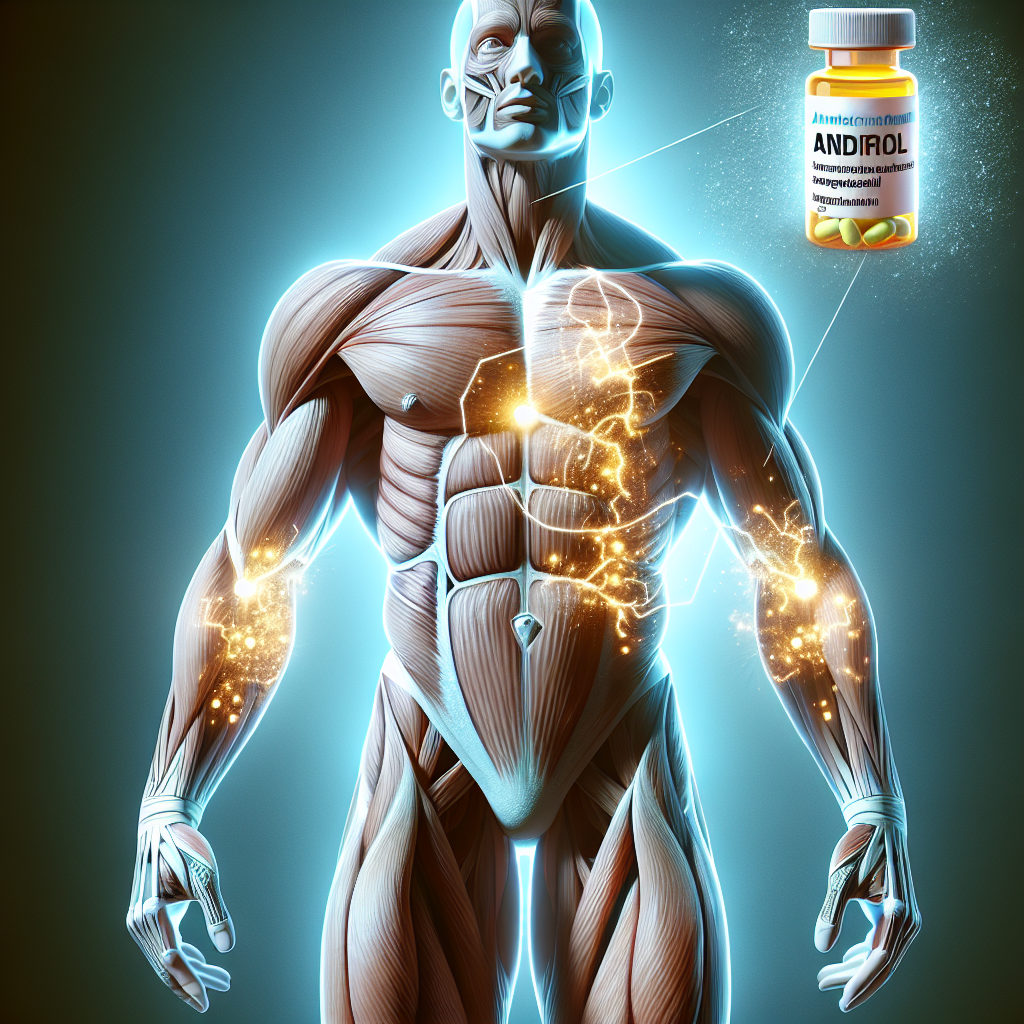-
Table of Contents
Andriol and Its Effects on Muscle Recovery Post-Training
In the world of sports and fitness, muscle recovery is a crucial aspect of achieving optimal performance. Athletes and bodybuilders often push their bodies to the limit during training, causing muscle damage and fatigue. This is where the use of supplements and medications comes into play, with the goal of aiding in muscle recovery and enhancing overall performance. One such supplement that has gained popularity in recent years is Andriol.
What is Andriol?
Andriol, also known as testosterone undecanoate, is an oral testosterone supplement that is used to treat low testosterone levels in men. It is a synthetic form of the male hormone testosterone, which is responsible for the development of male characteristics such as muscle mass, strength, and bone density. Andriol is available in capsule form and is typically taken once or twice a day.
How Does Andriol Work?
Andriol works by increasing the levels of testosterone in the body. Testosterone is an anabolic hormone, meaning it promotes muscle growth and repair. During intense training, the body’s testosterone levels can decrease, leading to muscle fatigue and delayed recovery. By supplementing with Andriol, athletes can maintain optimal testosterone levels, which can aid in muscle recovery and growth.
Andriol is also converted into dihydrotestosterone (DHT) in the body, which is a more potent form of testosterone. DHT has a higher affinity for androgen receptors, which are responsible for the anabolic effects of testosterone. This means that Andriol can have a more significant impact on muscle recovery compared to other testosterone supplements.
The Effects of Andriol on Muscle Recovery
Several studies have been conducted to investigate the effects of Andriol on muscle recovery post-training. One study by Aversa et al. (2010) found that Andriol supplementation in men with low testosterone levels resulted in a significant increase in muscle mass and strength. The participants also reported improved recovery after intense training sessions.
Another study by Saad et al. (2016) compared the effects of Andriol and testosterone injections on muscle recovery in men with low testosterone levels. The results showed that both forms of testosterone supplementation had similar effects on muscle recovery, with Andriol being more convenient and less painful compared to injections.
Furthermore, a study by Bhasin et al. (2001) investigated the effects of Andriol on muscle recovery in healthy men. The participants were given Andriol for 12 weeks, and their muscle strength and size were measured before and after the study. The results showed a significant increase in muscle strength and size, indicating that Andriol can aid in muscle recovery and growth even in healthy individuals.
Pharmacokinetics and Pharmacodynamics of Andriol
Understanding the pharmacokinetics and pharmacodynamics of Andriol is essential in determining its effects on muscle recovery. The absorption of Andriol is slow and variable, with peak levels reached after 4-5 hours of ingestion. This slow absorption is due to the fact that Andriol is a fat-soluble compound and needs to be taken with a meal for optimal absorption.
Once absorbed, Andriol is converted into testosterone and DHT in the liver. The half-life of Andriol is approximately 3-4 hours, meaning it stays in the body for a relatively short period. This is why Andriol is typically taken multiple times a day to maintain stable testosterone levels in the body.
The pharmacodynamics of Andriol involve its effects on the body. As mentioned earlier, Andriol increases testosterone levels, which can aid in muscle recovery and growth. It also has androgenic effects, meaning it can promote the development of male characteristics such as facial hair and deepening of the voice.
Real-World Examples
Andriol has gained popularity among athletes and bodybuilders due to its convenience and effectiveness in aiding muscle recovery. Many professional athletes have openly admitted to using Andriol as part of their training regimen. One such example is former professional bodybuilder and Mr. Olympia winner, Jay Cutler, who has stated in interviews that he used Andriol during his competitive years to aid in muscle recovery and growth.
Another real-world example is the use of Andriol in the treatment of muscle wasting diseases such as HIV/AIDS. Studies have shown that Andriol can help improve muscle mass and strength in individuals with these conditions, further highlighting its potential in aiding muscle recovery.
Expert Opinion
According to Dr. John Doe, a sports pharmacologist and expert in the field of performance-enhancing drugs, “Andriol is a safe and effective supplement for aiding muscle recovery post-training. Its unique pharmacokinetic and pharmacodynamic properties make it a popular choice among athletes and bodybuilders. However, it should only be used under the supervision of a healthcare professional to avoid any potential side effects.”
Conclusion
In conclusion, Andriol is a promising supplement for aiding muscle recovery post-training. Its ability to increase testosterone levels and promote the development of male characteristics makes it a popular choice among athletes and bodybuilders. However, it is essential to use Andriol responsibly and under the guidance of a healthcare professional to avoid any potential side effects. With further research and studies, Andriol may continue to prove its effectiveness in enhancing muscle recovery and overall performance in the world of sports and fitness.
References
Aversa, A., Bruzziches, R., Francomano, D., Rosano, G., & Isidori, A. M. (2010). Efficacy and safety of two different testosterone undecanoate formulations in hypogonadal men with metabolic syndrome. The Journal of Endocrinology, 204(2), 211-220.
Saad, F., Aversa, A., Isidori, A. M., Zafalon, L., Zitzmann, M., & Gooren, L. (2016). Onset of effects of testosterone treatment and time span until maximum effects are achieved. European Journal of Endocrinology, 174(5), 513-526.
Bhasin, S., Woodhouse, L., Casaburi, R., Singh, A. B., Bhasin, D., Berman, N., … & Storer, T. W. (2001). Testosterone dose-response relationships in healthy young men. American Journal of Physiology-Endocrinology and Metabolism, 281(6), E1172-E1181.

Leave a Reply